Postmagmatic Tectonic Evolution of the Outer Izu-Bonin Forearc Revealed by Sediment Basin Structure and Vein Microstructure Analysis: Implications for a 15 Ma Hiatus Between Pacific Plate Subduction Initiation and Forearc Extension
- PMID: 32055237
- PMCID: PMC7004124
- DOI: 10.1029/2019GC008329
Postmagmatic Tectonic Evolution of the Outer Izu-Bonin Forearc Revealed by Sediment Basin Structure and Vein Microstructure Analysis: Implications for a 15 Ma Hiatus Between Pacific Plate Subduction Initiation and Forearc Extension
Abstract
International Ocean Discovery Program Expedition 352 recovered sedimentary-volcaniclastic successions and extensional structures (faults and extensional veins) that allow the reconstruction of the Izu-Bonin forearc tectonic evolution using a combination of shipboard core data, seismic reflection images, and calcite vein microstructure analysis. The oldest recorded biostratigraphic ages within fault-bounded sedimentary basins (Late Eocene to Early Oligocene) imply a ~15 Ma hiatus between the formation of the igneous basement (52 to 50 Ma) and the onset of sedimentation. At the upslope sites (U1439 and U1442) extension led to the formation of asymmetric basins reflecting regional stretch of ~16-19% at strain rates of ~1.58 × 10-16 to 4.62 × 10-16 s-1. Downslope Site U1440 (closer to the trench) is characterized by a symmetric graben bounded by conjugate normal faults reflecting regional stretch of ~55% at strain rates of 4.40 × 10-16 to 1.43 × 10-15 s-1. Mean differential stresses are in the range of ~70-90 MPa. We infer that upper plate extension was triggered by incipient Pacific Plate rollback ~15 Ma after subduction initiation. Extension was accommodated by normal faulting with syntectonic sedimentation during Late Eocene to Early Oligocene times. Backarc extension was assisted by magmatism with related Shikoku and Parece-Vela Basin spreading at ~25 Ma, so that parts of the arc and rear arc, and the West Philippine backarc Basin were dismembered from the forearc. This was followed by slow-rift to postrift sedimentation during the transition from forearc to arc rifting to spreading within the Shikoku-Parece-Vela Basin system.
Keywords: Expedition 352; International Ocean Discovery Program (IODP); Izu ‐ Bonin forearc; faulting and extension; hiatus; syntectonic sedimentation.
©2019. The Authors.
Figures
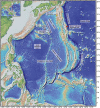







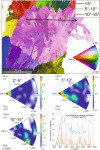
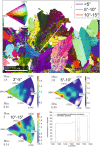
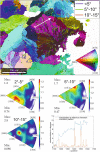

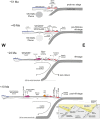
References
-
- Allerton, S. , & Vine, F. J. (1990). Palaeomagnetic and structural studies of the southeastern part of the Troodos complex In Malpas J., Moores E. M., Panayiotou A., & Xenophontos C. (Eds.), Ophiolites: Oceanic crustal analogues (pp. 99–111). Nicosia: Cyprus Geological Survey Department.
-
- Arculus, R. J. , Ishizuka, O. , Bogus, K. , & the Expedition 351 Scientists (2015). Proceedings of the International Ocean Discovery Program, Expedition 351: Izu‐Bonin‐Mariana Arc Origins. College Station, TX: International Ocean Discovery Program; 10.14379/iodp.proc.351.2015 - DOI
-
- Arculus, R. J. , Ishizuka, O. , Bogus, K. A. , Gurnis, M. , Hickey‐Vargas, R. , Aljahdali, M. H. , Bandini‐Maeder, A. N. , Barth, A. P. , Brandl, P. A. , Drab, L. , do Monte Guerra, R. , Hamada, M. , Jiang, F. , Kanayama, K. , Kender, S. , Kusano, Y. , Li, H. , Loudin, L. C. , Maffione, M. , Marsaglia, K. M. , McCarthy, A. , Meffre, S. , Morris, A. , Neuhaus, M. , Savov, I. P. , Sena, C. , Tepley, F. J. III , van der Land, C. , Yogodzinski, G. M. , & Zhang, Z. (2015). A record of spontaneous subduction initiation in the Izu‐Bonin‐Mariana arc. Nature Geoscience, 8(9), 728–733. 10.1038/ngeo2515 - DOI
-
- Bachmann, F. , Hielscher, R. , Jupp, P. E. , Pantleon, W. , Schaeben, H. , & Wegert, E. (2010). Inferential statistics of EBSD data from within individual crystalline grains. Journal of Applied Crystallography, 43(6), 1338–1355. 10.1107/S002188981003027X - DOI
-
- Barth, A. P. , Tani, K. , Meffre, S. , Wooden, J. L. , Coble, M. A. , Arculus, R. J. , Ishizuka, O. , & Shukle, J. T. (2017). Generation of silicic melts in the early Izu‐Bonin Arc recorded by detrital zircons in proximal arc volcaniclastic rocks from the Philippine Sea. Geochemistry, Geophysics, Geosystems, 18, 3576–3591. 10.1002/2017GC006948 - DOI
LinkOut - more resources
Full Text Sources
